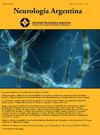Trombosis venosa cerebral: experiencia en un hospital de referencia nacional del Perú
Q4 Medicine
引用次数: 0
Abstract
Aim
To describe the incidence, clinical characteristics, evolution, and outcomes of inpatients with the diagnosis of cerebral venous thrombosis (CVT).
Methods
Descriptive observational study in a national reference hospital in Peru. The study population included adult patients hospitalized with a diagnosis of CVT, during the period from January 2019 to December 2023. Demographic, clinical, imaging, laboratory, and clinical evolution data were recorded, as well as important clinical outcomes such as admission to the ICU, mortality, functionality at discharge, and recurrence 6 months after the event. Categorical variables were described, and the annual incidence rate of CVT per 1000 stroke cases was calculated.
Results
Twelve patients with a diagnosis of CVT confirmed by an angiographic method were included. The annual incidence rate was between 5.14 cases per 1000 patients with cerebrovascular disease in 2022 and 11.03 cases per 1000 in 2020. The majority were women (58.3%) and the median age was 47.5 years. The most affected area was the transverse sinus (66.7%). The most frequent initial clinical symptoms were headache, motor deficit and intracranial hypertension. The median time from the onset of the clinical picture to anticoagulant treatment was 6.5 days and the hospital stay was 33.5 days. There was a 41.7% admission to the ICU, half were discharged with functional independence, no mortality was reported and a quarter of the cases presented recurrence.
Conclusion
A first local study is reported on the incidence, clinical characteristics, and hospital outcome of Peruvian patients with CVT. Certain aspects are highlighted such as timely diagnosis and treatment in this condition that could have been related to the good clinical outcomes.
脑静脉血栓形成:在秘鲁国家转诊医院的经验
目的探讨脑静脉血栓形成(CVT)的发生率、临床特点、演变及转归。方法在秘鲁一家国家参考医院进行描述性观察研究。研究人群包括2019年1月至2023年12月期间诊断为CVT住院的成年患者。记录人口统计学、临床、影像学、实验室和临床进展数据,以及重要的临床结果,如入住ICU、死亡率、出院时功能和事件发生后6个月的复发率。对分类变量进行描述,并计算每1000例脑卒中患者CVT的年发病率。结果本组12例经血管造影证实为CVT的患者。脑血管病年发病率从2022年的5.14 / 1000例上升到2020年的11.03 / 1000例。多数为女性(58.3%),中位年龄为47.5岁。以横窦为主(66.7%)。最常见的首发临床症状为头痛、运动障碍和颅内高压。从出现临床症状到抗凝治疗的中位时间为6.5天,住院时间为33.5天。入院率为41.7%,出院功能独立者占一半,无死亡报告,1 / 4的患者出现复发。结论首次报道了秘鲁CVT患者的发病率、临床特征和住院结果。某些方面被强调,如及时的诊断和治疗,在这种情况下,可能已经涉及到良好的临床结果。
本文章由计算机程序翻译,如有差异,请以英文原文为准。
求助全文
约1分钟内获得全文
求助全文
来源期刊

Neurologia Argentina
Medicine-Neurology (clinical)
CiteScore
0.50
自引率
0.00%
发文量
34
期刊介绍:
Neurología Argentina es la publicación oficial de la Sociedad Neurológica Argentina. Todos los artículos, publicados en español, son sometidos a un proceso de revisión sobre ciego por pares con la finalidad de ofrecer información original, relevante y de alta calidad que abarca todos los aspectos de la Neurología y la Neurociencia.
 求助内容:
求助内容: 应助结果提醒方式:
应助结果提醒方式:


